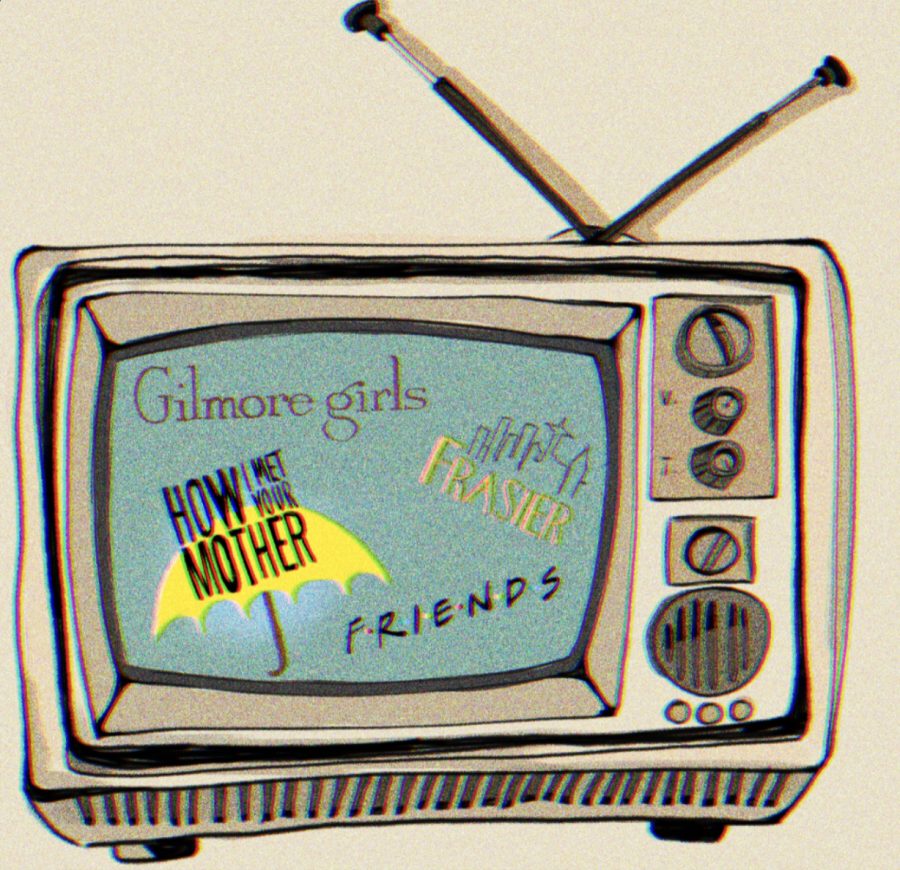Television of the past fulfills longing for nostalgia
The sitcoms of the 1990s and early 2000s were successful shows that gave a sense of nostalgia to their viewers. The Sidekick staff writer Nyah Rama showcases what makes these shows so memorable. Aarya Pardeshi
April 24, 2023
I come home after a long and arduous week, ready to sit on the couch and put on a comforting sitcom. I turn on the TV and scroll through my streaming services only to come to a horrifying realization.
There is nothing to watch.
Shows such as “Wednesday” or “Never Have I Ever” are all I can find, and suddenly, the problem becomes clear: what I need is a comforting show like “Friends” or my all-time favorite, “How I Met Your Mother,” and my need is going to go unsatisfied.
When I think of these shows, a feeling of nostalgia washes over me. I am transported back to the days I would spend watching “Gilmore Girls” with my mom, or the times that I came home from school and put “Friends” on, and I feel comforted and content.
Unfortunately, those needs are unrequited in today’s television era with the likes of popular shows such as “The Good Place” and “New Girl.”
While these are still perfectly entertaining shows in their own right, they lack the originality and comfort of previous sitcoms. As time progressed through the 2010s, shows became repetitive with shows such as “New Girl” just feeling like new iterations of “Friends” and other popular shows of past decades.
The amount of reboots, remakes or continuations like “Gilmore Girls: A Year in the Life” and “How I Met Your Father” is clear evidence. The continued return to these shows is because the formula for them simply was different than those of the shows created today.
It was better.
Shows of the 1990s and 2000s like “Frasier” relied more on realistic scenarios and characters. The characters seemed more developed and the shows did not pander to whatever was popular in the moment like television shows today tend to do.
These shows also had duration. “Gilmore Girls” ran for seven seasons with 40 minute episodes and “Friends” ran for 10 seasons. Now, the average life for a show on Netflix is two seasons. The lack of longevity in shows nowadays makes it difficult to create a show that can incorporate all the characteristics that past series had simply because there is not enough time to develop a compelling story or character.
Past generations tell stories of the shows they grew up with and the times they came home from school ready to binge the next new episode of shows like “Felicity.” My generation will never be able to say that because of the lack of longevity and that special feeling of nostalgia.
New series need to call upon that ancient formula of the 1990s and 2000s without seeming repetitive or unoriginal in order to start creating things that last. Show writers and creators must start finding ways to bring back the idea of comfort shows without turning to reboots or rip-offs, otherwise television is headed for stagnancy.
Follow Nyah Rama (@nyah_rama) and @CHSCampusNews on Twitter.











